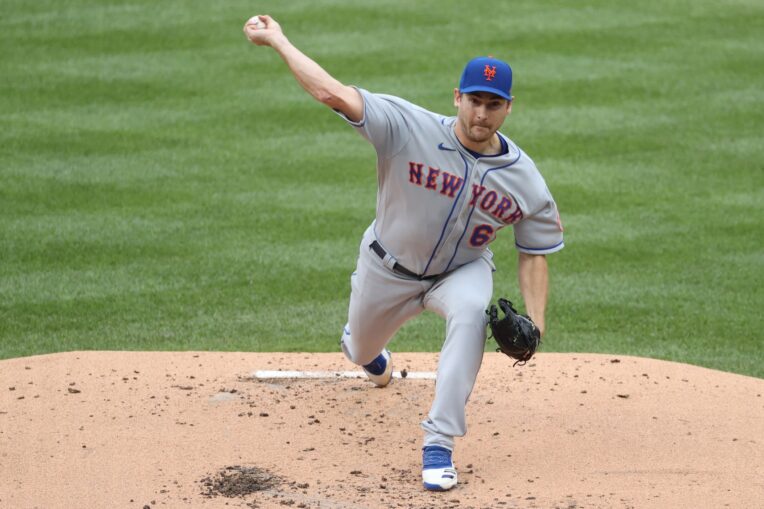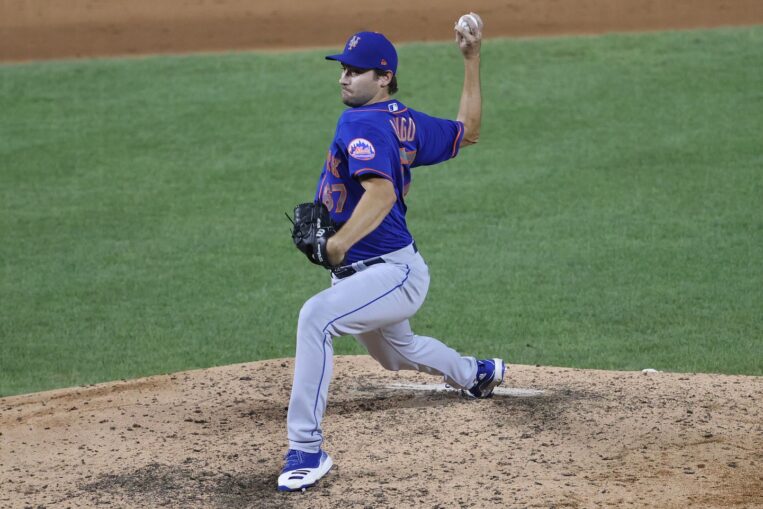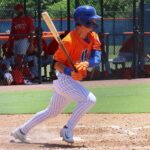
While the New York Mets are looking to fill multiple holes in their starting rotation this offseason, they’ll also need to make a very important decision with one of their top hurlers and it seems the best course of action might be to send him back to the bullpen.
As of right now, the Mets currently have just three starting pitchers (Jacob deGrom, Marcus Stroman, and David Peterson) slotted into their rotation, although the team is expecting Noah Syndergaard to return from his Tommy John surgery at some point next season.
Needing to locate two additional starters over the next few months, it’s clear the front office will look to acquire at least one impact arm, but they may have an internal candidate who could fill that final spot.
Despite serving as an elite reliever during the last two seasons, pitcher Seth Lugo was asked to emerge from the bullpen and transition into the starting rotation this past season, which is something he’s been striving to achieve ever since making his MLB debut in 2016. With the pitching staff riddled with injuries, the organization felt this was the perfect opportunity to stretch the 31-year old out as a starter and it was definitely met with some mixed results.
Though things started very well, as he produced a 1.54 ERA, 3.02 FIP, 1.62 xFIP, 43.5% strikeout rate, and an 8.7% walk rate over his first three starts, the honeymoon phase didn’t last very long and Lugo certainly gained a much better understanding of how difficult being a starter in the major leagues can be.
Failing to replicate his early success, the right-hander recorded a troubling 9.82 ERA, 6.67 FIP, 4.34 xFIP, 21.6% strikeout rate, along with a 5.4% walk rate over his final four starts of the season.
Overall, the former 34th-round selection compiled 26 1/3 innings as a starter in 2020, generating a 6.15 ERA, 5.05 FIP, 3.13 xFIP, 1.52 WHIP, .296 OPP AVG, 30.0% strikeout rate, 6.7% walk rate, 21.6% LD rate, 50.0% GB rate, 28.4% FB rate, 33.3% HR/FB rate, and a 40.5% hard-hit rate.
In comparison, Lugo completed 10 1/3 innings as a reliever, creating a 2.61 ERA, 2.90 FIP, 2.76 xFIP (tied for 16th-lowest among all relievers who pitched at least 10.0 innings), 0.97 WHIP, .211 OPP AVG, 27.5% strikeout rate, 5.0% walk rate, 33.3% LD rate, 44.4% GB rate, 22.2% FB rate, 16.7% HR/FB rate, along with a 14.8% hard-hit rate, according to FanGraphs.com.

Even though the 6-foot-4 hurler is determined to become a full-time starter moving forward, his recent splits suggest he’d probably be better off returning to the bullpen and competing against teammate Edwin Diaz for the closer’s role in 2021.
While this might not be his preferred option, it’s one that has a strong chance of benefiting himself and the Mets in several different ways, which is something that could help him return to his previous form as one of the most dominant relievers in the majors.
Starting with his repertoire, Lugo primarily relies on his mid-90s four-seamer and was able to enjoy plenty of success with it heading into the 2020 campaign. But after moving to the starting rotation out of necessity, his fastball proved to be much less effective and hitters didn’t have any issues barreling it up through the final month of the season.
Taking this a step further, the product from Centenary College sustained a notable drop in velocity with his fastball as the season progressed, which is rarely a recipe for success. Adding to this, the lack of mid-90s heat also resulted in his four-seamer being located lower in the strike zone and he wasn’t able to turn either of these aspects around before the regular season concluded.
After repeatedly hitting 95 and 96 mph on the radar gun through the first half of the season, Lugo’s transition to the rotation saw his heater’s velocity drop down to 92 and 93 mph – considered a significant decline compared to earlier in the summer.
As for its vertical movements, his fastball averaged 13-14 inches of drop during his time in the bullpen, but the righty watched those numbers increase to 15-16 inches of drop after becoming a starter in late August.
As a result of these issues, the California native surrendered three doubles, five home runs, a .367 AVG, a .313 xAVG, a .967 SLG, a .798 xSLG, a .546 wOBA, a .447 xwOBA, a 33.3% barrel rate, a 61.1% hard-hit rate, a 44.4% LD rate, a 9.1% walk rate, and a 94.6 mph average exit velocity against his four-seamer in September.
Along with the decline of his fastball, keeping Lugo in the rotation would undoubtedly put further strain on his body and it could potentially lead to a string of significant arm injuries, especially since he opted for rehab rather than having Tommy John surgery back in 2017.
While he’s nearly four years removed from his partial UCL tear, it’d still be wise for the Mets to control his workload and prevent him from placing too much stress on his arm throughout the second half of his career.
With Syndergaard expected to return in 2021, it seems Lugo would probably return to the bullpen at some point anyway, even if he opened next season as a starter.
Since the organization is currently searching for bullpen help, the veteran righty would essentially serve as a much-needed acquisition if moved back there, as he’d join Diaz and newly signed reliever Trevor May as reliable options during high-leverage situations.

Credit: Jeffrey Becker-USA TODAY Sports
Though moving the elite reliever back to the bullpen would temporarily create two open vacancies in the rotation, the Mets do feature some internal candidates who could fill one of those spots, as pitchers like Franklyn Kilome, Robert Gsellman, or newly acquired Sam McWilliams could each compete for that role.
The Mets also tendered a contract to Steven Matz yesterday, albeit one that is non-guaranteed, so he will compete for a spot at the backend of the rotation.
If the front office wants to add some external competition, they could sign one of the low-risk, high-reward free-agent starters that are available, perhaps someone like Anibal Sanchez, Chase Anderson, or Gio Gonzalez.
Regardless of what happens in free agency, there’s no question the Mets will be an improved overall team with Lugo serving as a high-leverage reliever once again. Considering he finished tied with the third-highest fWAR rating (2.3) among all qualified relievers in 2019, the team shouldn’t have any issues holding leads if he’s able to replicate his strong showing in 2021.
Following the signing of May, the Mets seem to be in a strong position to feature an extremely reliable and deep bullpen next season. Which is something they haven’t been able to achieve over the last several campaigns.















